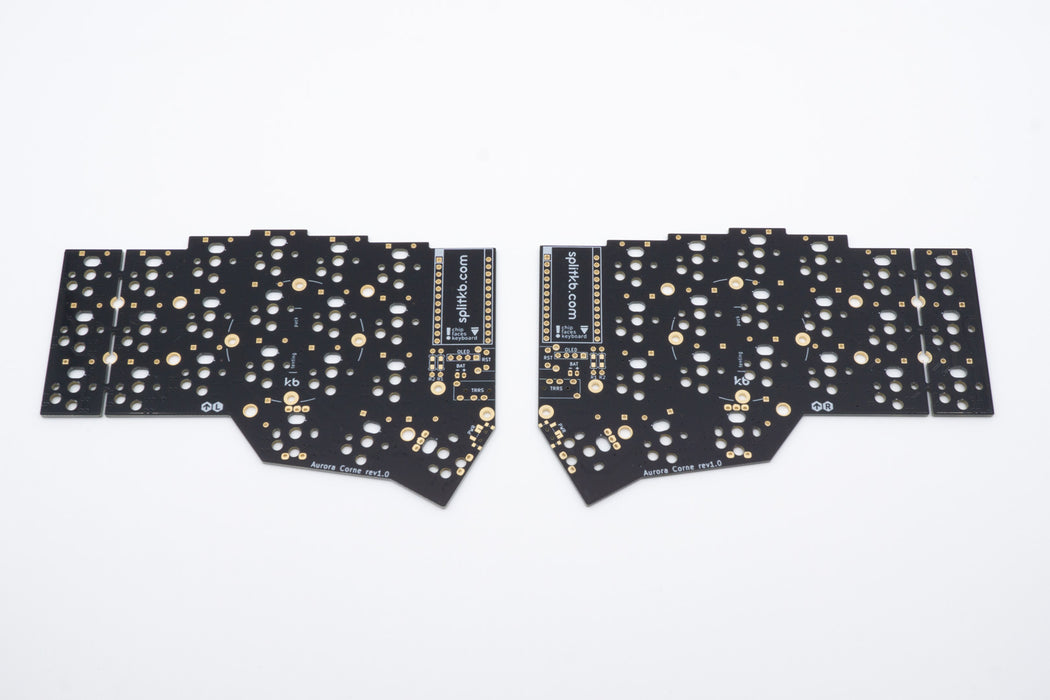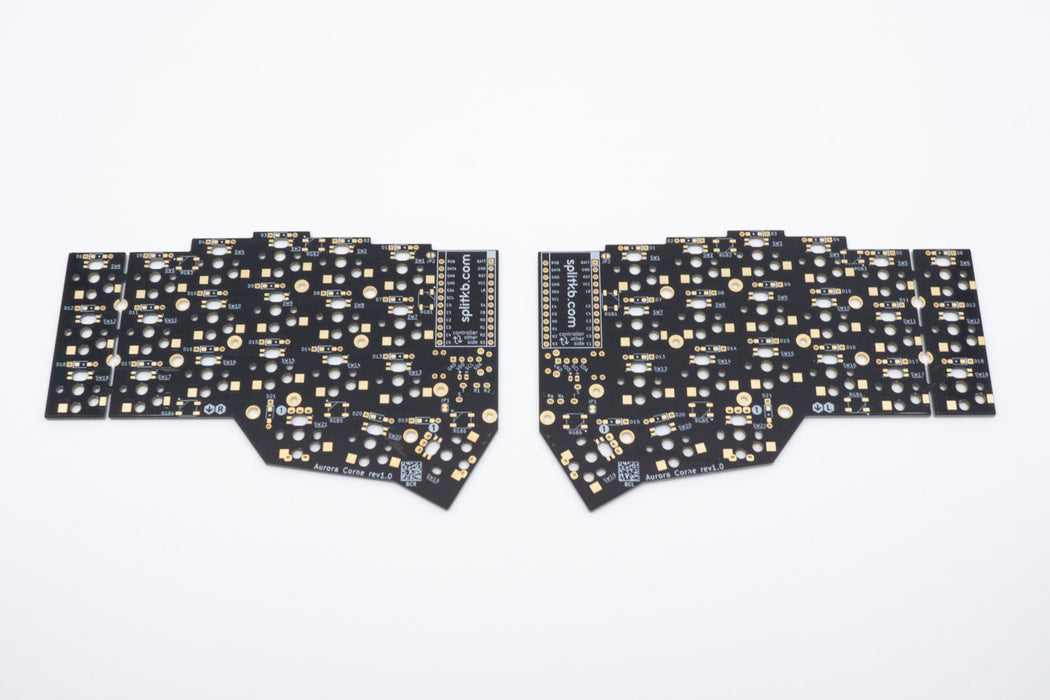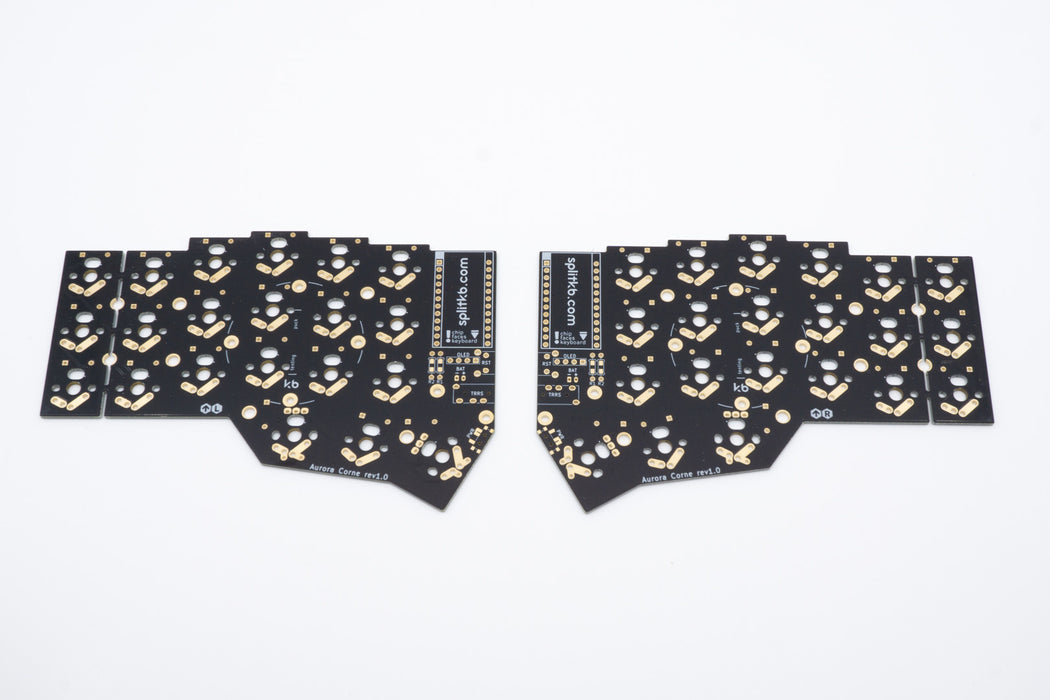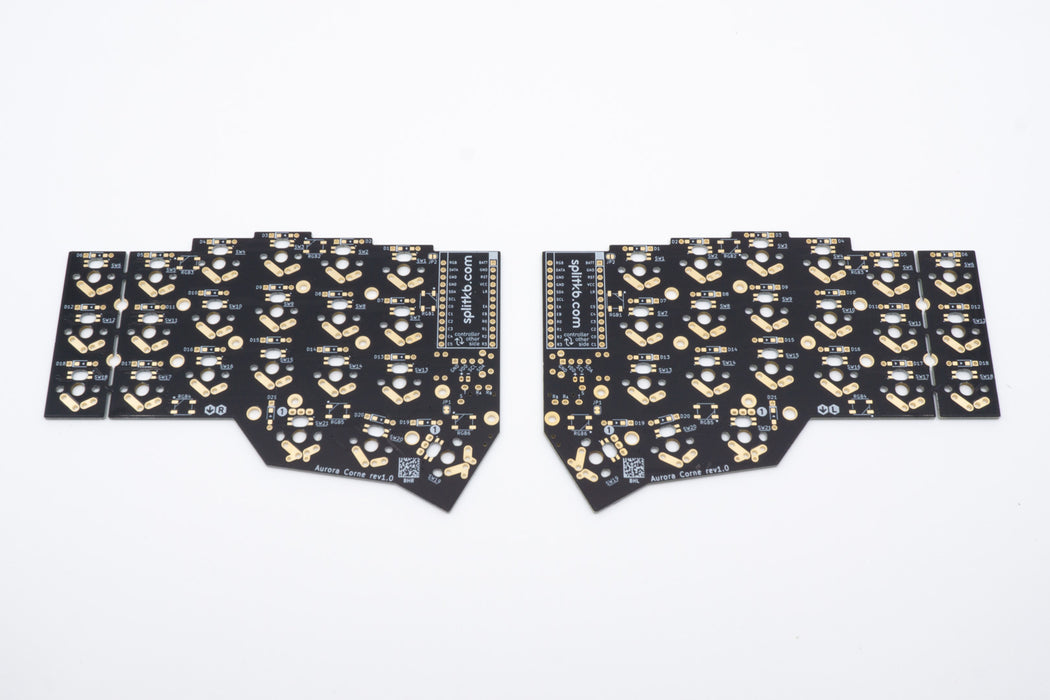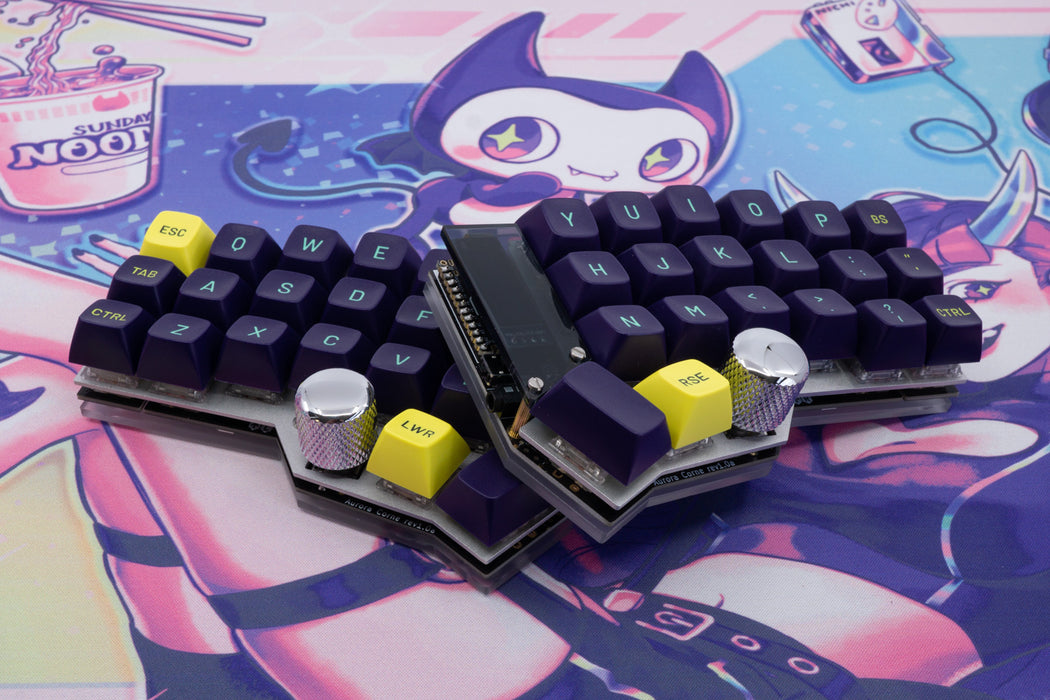
Aurora Corne PCB Kit
Selecting the right parts for your kit is easy with our new kit Composer.
The Aurora Corne is a redesign by splitkb.com of the popular Corne keyboard (also known as the crkbd or the Helidox) by Foostan. The original project is open source. For every kit sold, splitkb.com will donate €1 across the firmware projects we support.
What's the Aurora Corne?
The Aurora Corne is relatively small split keyboard with 42 keys. It has enough keys to be comfortable, yet it's still quite compact and portable. The original Corne was partially based off of the Helix by Makoto Kurauchi, and is one of the first split keyboards to have become wildly popular.
Features
The Aurora Corne supports the following features:
- A small yet comfortable layout with 42 keys;
- Powered by QMK or ZMK firmware;
- Support for MX (see remarks) or Kailh Choc (v1 sold at splitkb.com, not v2) switches;
- MX spacing for all variants;
- Top mounted controllers for a lower profile;
- Up to two 128×32 pixel OLED displays;
- Up to one EC11 rotary encoders per half in one of two possible positions (marked by white circles);
- Per-key RGB backlight by individual RGB LEDs;
-
Underglow by individual RGB LEDs;
- Support for a power switch for wireless controllers;
- Support for the splitkb.com tenting puck.
What's included?
Every kit includes:
- 1 × Left PCB;
- 1 × Right PCB;
- 65 × 1N4148 axial signal diode;
- 5 × 4k7 Ohm axial resistor;
- 2 × PJ-3200B-4A TRRS Jack, black, and;
- 2 × Reset button.
The Choc Hotswap kit includes SMD diodes and SMD resistors instead of axial ones.
If you get a hot swap kit, the kit will also include:
- 42 × Kailh Hotswap socket in either Choc or MX, black.
What's required?
Beyond the kit contents, you'll also need to get the following items to make a working keyboard:
- 2 × Pro Micro-compatible controller (Pro Micro, Elite C, Elite Pi, Liatris, nice!nano);
- 42 × Kailh Choc or MX-compatible switch;
- 42 × Kailh Choc or MX-compatible keycap;
- 1 × TRRS cable, and;
- 1 × USB cable compatible with your controller of choice (usually USB C or Micro USB to USB A).
If you're getting the hand solder kit and are going to use Choc switches with a conductive case (like aluminium or FR4 plates), you'll also want to get a set of SMD diodes. You won't be able to clip the legs of axial diodes short enough to avoid accidental shorts.
What's optional?
And lastly, you can get these options to add some bling to your keyboard:
- A set of case parts is recommended to use to protect your keyboard during use and transport;
- 2 × 128x32 OLED display with optional 4-pin OLED sockets;
- 2 × Set of controller sockets, with optional pins;
- 42 × SK6812MINI-E per-key RGB LEDs;
- 12 × WS2812B underglow RGB LEDs;
- Up to 2 × Encoder with knobs, and;
- 2 × Tenting puck (compatible with most camera tripods, like the Manfrotto Pocket Tripod).
What is the Aurora Series?
The Aurora series were designed as a homage to open source keyboard kits that have carved their space into the community. Kits that provided something new and unique, kits that resonated with the community and that have both received and have given a lot of love in return.
With the Aurora series, we aim to make these kits available to the community in a way that both honors the original, while also offering the best possible feature set and a consistent, well-documented build experience.
For each kit sold, we give back to the community by donating €1 across the firmware projects we support. This way we support open source projects and benefit everyone using keyboards, whether they use our kits or their own.
Build Guide
Check out the Aurora Build Guide on our documentation site.
Remarks
The LEDs on all Aurora kits are north-facing. This means they'll light up any legends that may be on your keycaps nicely, provided they're translucent. The caveat of this, is that Cherry-profile keycaps (such as by those by GMK) may interfere with the switch housing. Other keycap profiles together with MX-style switches, along with Kailh low profile choc switches, are all not affected.
This kit can't use the JST jack from the Wireless Expansion Kit, which you'd use with a nice!nano. It's simply too small! You can solder the battery leads directly to the dedicated pads, though.
If you use Kailh Choc low profile switches, you can't use a rotary encoder. There won't be enough space for the encoder's legs between the top plate and the PCB. If you're very inclined, though, you can work around this by modifying the plate files and having your own plates cut, or by modifying a store-bought plate with a tool like a file or Dremel.
The rev1.0 versions of this kit can't fit a power switch on the Choc hotswap version or hand-solder version with choc low profile switches in combination with a top plate. The MX and Choc hotswap variants of this kit are now rev1.1, and don't have this limitation. The power switch will be moved in a future revision. Using it plateless is an option when using chocs and a nice!nano (or other wireless controller), or you might opt to modify and use your own plates.
Read More
There is extensive documentation available on most aspects of this keyboard. Have a look at these resources to start with:
- What can you use an OLED display for?
- How can I use a rotary encoder?
- Why would I want to socket my microcontroller?
- Why would I want to use an Elite C? (Also goes into the details of what's different between the Elite C and the Pro Micro, and when to use which)
The case and keycaps shown are not included with this item. This product includes the PCB kit only.



